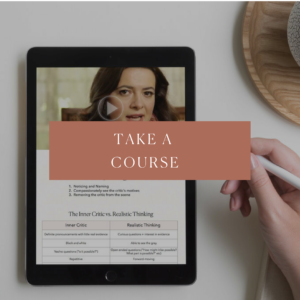Recently in our Playing Big Facilitators Training course, we had our class about powerful and effective negotiation. We got into an interesting discussion about different aspects of communication skills and I wanted to share some of that with you. All of us need these three kinds of communication in our toolkits – certainly for our Playing Big, but also for taking good care of ourselves in relationships:
1. Requests
Many of us never learned about making requests and don’t have this skill in our toolkit. It’s so important! A request sounds like, “Would you be willing to turn the music down?” or “In the future, could you give me more of a heads up when there is a change in scope to the project?” or “When I’m speaking about my day, could you be in more of a listening and empathizing mode, and not offer immediate solutions about the things I’m sharing? That would feel so much more loving to me.”
If you are living a life in this messy world full of people, you will have some requests arising inside of you! And when we do not have comfort making requests… well, I bet you can see the problem already. You may get passive aggressive, or suppress or try to rationalize away your own needs, rather than making requests. Or, you may grow resentful because somebody did not read your mind about your requests and instinctively honor them!
Making a request dramatically increases the chances your request will be met, but it certainly doesn’t guarantee it. Lots of time, the people in our lives – whether the ones we love dearly or the ones we work with, or the ones we just briefly cross paths with – will say in response, “No, I can’t.” ”No I can’t give you more of a heads up because I don’t have time to…” or “No I can’t just listen. I need to share my thoughts!” or “No I can’t turn down the music.” Sometimes, their “no’s” may feel hurtful, uncomfortable or even infuriating to us.
When you get a yes to your request, wonderful! When you don’t, then it’s just time to decide what you want to do next. You may choose to initiate further conversation (even entering a negotiation conversation – see #2) around the issue to see if, with some further learning about each person’s desires and constraints, a good solution can be developed. In other situations, you may choose to set a boundary as your next step (#3), if appropriate, and if possible given your role in the situation.
2. Negotiation
In the Playing Big model, we define negotiation as “a process in which two or more parties with differing interests or perspectives are exploring whether they can find a mutually agreeable plan/solution.” This is a definition from negotiation coach Carrie Gallant, and I love it, for so many reasons:
- It makes clear that a negotiation is not just what we do once a year when a salary conversation comes up with a supervisor, or if we are buying a car! No, no, no. Negotiation is an every day skill. We are in LOTS of situations with two or more parties with differing interests or perspectives – negotiating the holiday plan with relatives… negotiating who takes on the extra workload after a staffing cut at work… negotiating dishwashing duties with family members… and so on.
- This definition also helps us remember there’s usually not a bad guy in the negotiation but there are always multiple parties, who – understandably and inevitably – have differing aims and perspectives.
- And it makes clear the purpose of a negotiation: can we discover a plan/solution that is mutually
agreeable? Where both parties’ priorities/needs are addressed? The good news is that we don’t have to get there through deception or forceful arguing – it’s actually much more likely to be effective if we approach a negotiation conversation as a focused process of first inwardly clarifying our own needs/wants, then listening and inquiring toward the other party, communicating about our needs, and creative brainstorming to find win-wins. If we discover in such a process there really isn’t a “fit”, a mutually agreeable solution, we may need to take another approach – like get more help for the conversations, or find a way to meet our needs outside of the negotiation.
3. Boundary
A boundary is about what we will and won’t tolerate, or what we are or aren’t up for. A boundary is saying: I don’t do meetings in the morning because that’s my writing time. Or, I can make it to the meeting but I’ll have to leave right at the planned end time. Or, I’m very willing to have this conversation with you, but not when your voice is raised. I would be happy to talk about it with you when we can communicate about it calmly. A boundary comes from a quiet inward discernment of what feels loving and comfortable for us. It usually also depends on a kind of self-love and sense of deserving. And a healthy boundary doesn’t try to control what others will do, it is just a clarification of what we will do in the face of others’ behavior.
That’s a quick intro to what I see as three foundational parts of communication for our playing big, and for our well being. If much of this is feeling new to you, don’t feel badly! Most of us did not get much training or modeling around these practices. If you look at a situation now that’s been difficult, what do you notice about what requests, boundaries, or negotiation conversations could help?
Love,
Tara
Top photo credit: Susan Wilkinson






